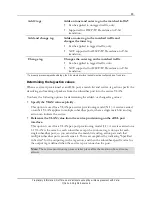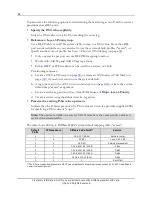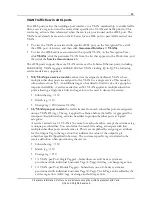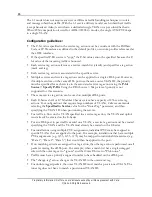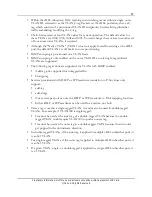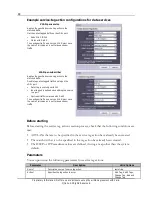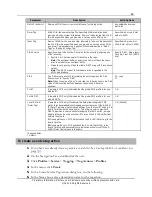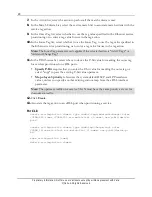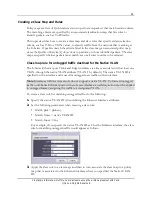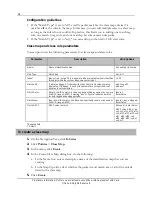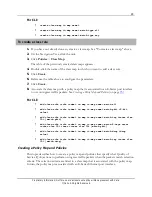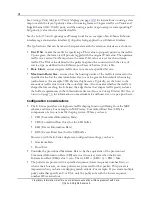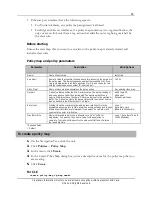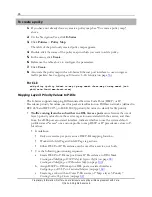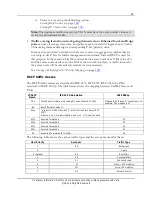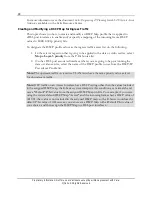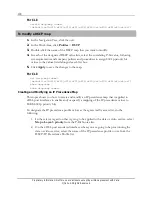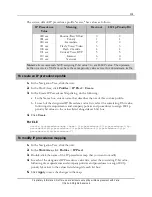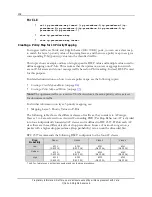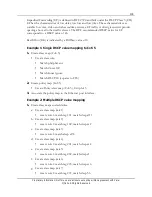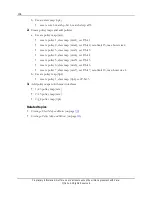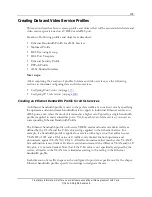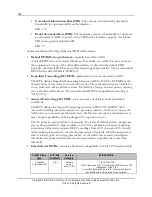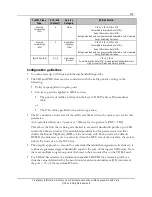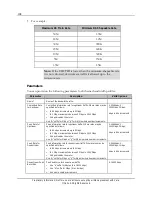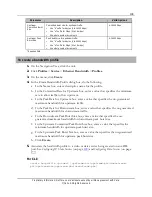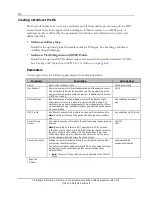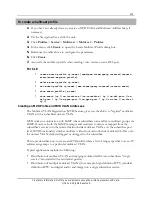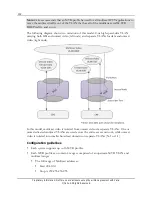
97
Proprietary Information: Not for use or disclosure except by written agreement with Calix.
© Calix. All Rights Reserved.
d.
Create service using the defined tag action.
Creating Data Services
(on page
183
)
Creating IP Video Services
(on page
196
)
Note:
The upstream traffic on a service VLAN must have the same priority value as is
set for the downstream traffic.
Traffic coming from the network going downstream to Ethernet Trunk and Edge
ports
can use class map, class rules, and policy maps to match the ingress Layer-3 value
of incoming frames and assign a corresponding P-bit (priority) value.
Some service providers' networks include core routers or aggregation switches that are
not setup to use P-bits for traffic management downstream. Instead DSCP is used for
this purpose. In these cases all traffic received by the access node has a P-Bit value of 0,
and the access node needs to set the P-bit at the network interface, or traffic internal to
the access node will be discarded at random (service unaware).
See
Creating a Policy Map for L3 Priority Mapping
(on page
102
).
DSCP traffic classes
The DSCP traffic classes are described in RFC 2474, RFC 2597, RFC 3246, the P-Bit
construct in IEEE 802.1p. The table below shows the mapping between Traffic Classes and
P-bits:
IP DSCP
Name
IP DSCP Abbreviation
IEEE 802.1p
CSx
Class Selector (where x is 0 through 7) as defined in RFC 2474
Mapped to P0 through P7 respectively. For
example: CS0 mapped to P0.
BE
Best Effort (also default)
P0
AFxy
"x" refers to Traffic Class, and "y" refers to Drop Precedence (RFC
2597).
Where x is 1,2,3,4 (higher is better), and y is 1, 2, 3 (lower is better)
AF1y
Assured Forwarding
P2
AF2y
Assured Forwarding
P3
AF3y
Assured Forwarding
P4
AF4y
Assured Forwarding
P5
EF
Expedited Forwarding (RFC 3246)
P6
The following table shows the various traffic types and the acronyms used for them:
User Priority
Acronym
Traffic Type
1
BK
Background
2
-
Spare
0 (Default)
BE
Best Effort
3
EE
Excellent Effort
4
CL
Controlled Load
5
VI
Video, < 100 ms delay
5
VO
Voice, <10 ms delay
7
NC
Network Control

